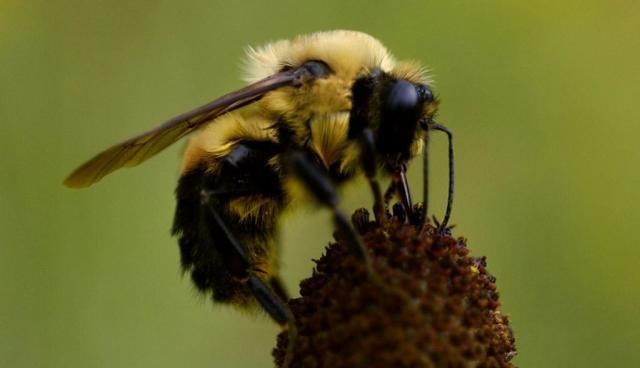
Swarm Season: Bees are House Hunting!
April and May are prime swarm season, and it’s a special privilege to witness swarming honey bees.
May 8, 2019
Do you know anyone who called an exterminator when they discovered a swarm of honey bees? If so, that is especially sad because honey bees are responsible for every third bite of food we consume, and they contribute $15 billion to American agriculture each year, and as any beekeeper will tell you, they are battling a combination of diseases, parasites, pesticides, and malnutrition.
April and May are prime swarm season and it’s a special privilege to witness swarming honey bees.
Albuquerque City Council elected Albuquerque to become a Bee City USA affiliate in 2016 to raise awareness of how vital pollinators are to life as we know it, and the challenges all pollinators face. We are Burque Bee City!
Honey bees function as a superorganism. In other words, a single honey bee cannot survive alone. While there are more than 20,000 species of bees in the world (think bumble, sweat, mason, leafcutter, digger, miner, carpenter, squash, blueberry, sunflower…), only seven of those species make honey. North America would not have honey bees today had the European colonists not introduced them in 1622 because they needed wax for candles.
The honey bee’s closest cousin is the bumble bee, a fellow colonist, with a queen and worker bees, but not one that overwinters or swarms like the honey bee. Honey bees have a large, complex society in which as many as 60,000 members perform services ranging from gathering food, constructing wax cells, tending the queen, providing health care, heating and cooling, nursing babies, etc. This allows them to build homes and food stores that get them through the winter, prepared to come out like gangbusters in the spring.
Splitting the colony in half and leaving with the old queen allows a new colony to be born, with a new queen. To prepare for swarming, nurse bees create new queen cells and the old queen’s court withholds food from the queen for a few days to make her flight-weight, since the only other time she has flown was for mating.
Then the worker bees that are leaving the hive fill their honey stomachs for the journey to their new home. Gorged on honey, their abdomens are so distended they are almost incapable of stinging.
Unprotected by their hive, a bee swarm is dangerously exposed to rain, cold, and myriad predators, and generally cannot survive more than three days. Ironically, with no hive to defend, they are much less defensive when swarming. Their focus is protecting their queen mother at the center of the swarm. She is responsible for their continued existence because most worker bees don’t live more than six weeks during the growing season.
Throughout the day, scout bees busily fly in about a three-mile range to identify prospective homes. They report back to the swarm through waggle dancing in a figure eight. The more intensely they dance, the better the chances their prospect is dry, protected from predators and large enough to house the colony’s food and babies. It’s really fun to watch multiple waggle dancers on the surface of a swarm!
So, if you see a swarm, let a beekeeper, your local beekeeping chapter, or your local Cooperative Extension Service know immediately, before it changes locations, so a beekeeper can attempt to rescue the bees.
A local directory of willing swarm catchers is available at http://abqbeeks.org/report-a-swarm
Almost all beekeepers dream of catching swarms, since buying bees costs about $150 or more per nucleus hive. Most importantly, you will be helping to sustain one of the world’s most fascinating and beneficial creatures.
For more information about Bee City USA, visit https://www.beecityusa.org/
For more information about the Xerces Society, visit https://xerces.org/
For information about four simple ways to help pollinators, visit https://xerces.org/bringbackthepollinators/
